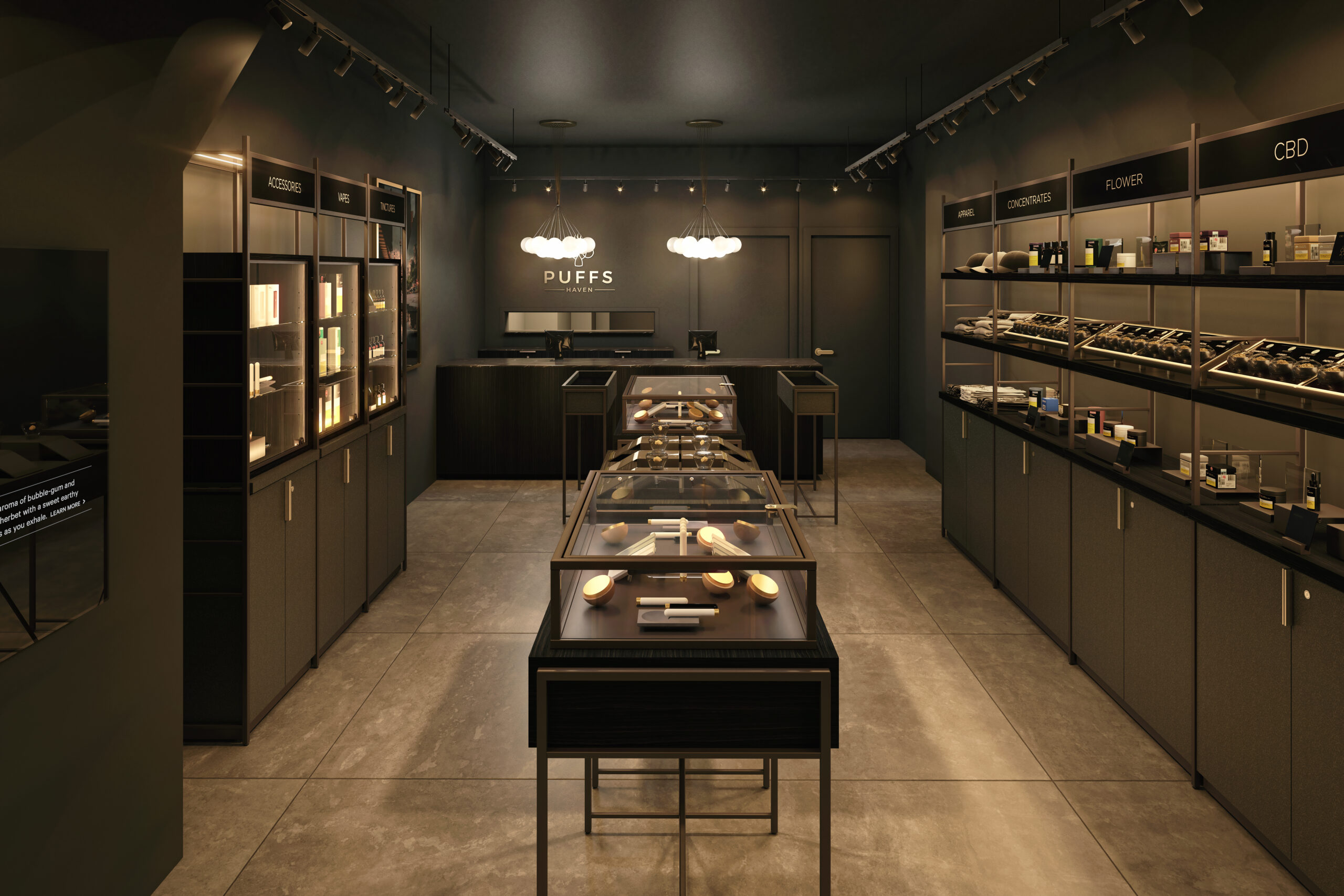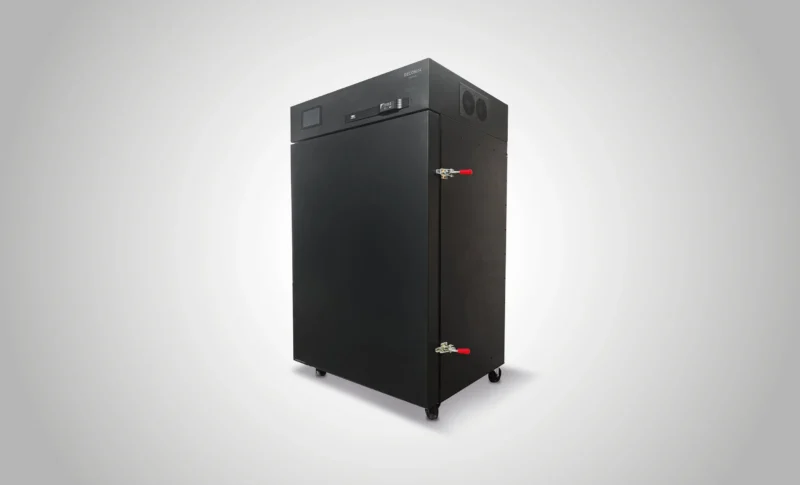What comes to mind when you imagine a beautiful dispensary?
Perhaps it’s laden with bright colors and dazzling technological displays highlighting the latest and greatest in cannabis. Maybe you imagine a warm, inviting space where you feel like you’re coming to visit an old friend.
Everyone has their own vision for their ideal business. Very few are able to bring that vision to life on time and within budget. To understand more about what goes into designing a successful retail establishment, Cannabis & Tech Today spoke with the team at SevenPoint Interiors.

While SevenPoint is focused on the newly-emerging cannabis scene, its parent company Visual Elements has been building high-end retail spaces for more than a decade.
Its client list includes Coach, Louis Vuitton, and several other designer brands known for unique, ultra-chic interiors.
In this interview, Creative Director Desmond Chan and Head of Design Randy Simmen break down what it takes to create eye-catching, compliant designs that will set your brand apart from the competition.
Cannabis & Tech Today: What are some of the biggest challenges retailers face in the design phase of a dispensary?
Desmond Chan: A lot of it is on time and on budget. Because we’re a vertically-integrated facility, we’re great at working within a budget.
Randy Simmen: We have customers who sought designs from other design firms who don’t have manufacturing integrated, it’s hard for them to really understand the cost associated with executing some of these designs. So a customer will come to us with a budget and a design and when you look at it, the budget doesn’t really match up with the design. We can give them reasons why — be it material choices or even just structural challenges. We make sure they’re not over designing to the point that it’s out of the realm of possibility when it comes to budget and timing.
C&T Today: What’s your strategy for blending beautiful design with compliance?
DC: In Canada, you’re not allowed to look into a store and see the transaction, point of sale, or anything associated with cannabis products from the street. So we find creative ways to draw customers into the store. For example, we have a client’s store inspired by the Grateful Dead. From the outside you can’t really see any cannabis products, but it still draws attention and creates an experience that draws people into the store. That’s one example of a creative component.
RS: From the street, you can see all the way into the back of the store, you can see people shopping the store, but you can’t see any cannabis. So that’s one example of a creative loophole where we have to work inside this
box and figure out how to creep outside of it a little bit.
C&T Today: What should retailers consider when creating an interior design?
RS: You need to find a way to set yourself apart and stand out from the rest. Because at the end of the day, I think those who are going to survive and still be open years from now are those that took the time to really focus on the experience and the customer journey.
C&T Today: You offer custom designs as well as prefabricated designs. When is prefab the best option for a retailer?
RS: We call it pre-engineered. If someone comes to us with a really quick timeline, rather than investing all of our time designing the tables and the fixtures, we’re spending that time on layout and customer journey. And then based on the brand they have, or the aesthetic they are trying to achieve, we apply the finishes and materials to the pre-engineered system. That’s created here and we can put it straight into production.
DC: What normally takes a custom job three or four months or even longer to build, what we’re doing with the module collection is closer to six to eight weeks turnaround.
C&T Today: What do you think is an often overlooked aspect of successful interior design?
RS: I think the interior design piece, we are pretty good at covering. I honestly think the most overlooked thing in our experience is the branding. We have a lot of customers that come to us with ambitions of a beautiful retail space, but then we create the shelves and now you have to fill those shelves, and the way that you display the product information should all be consistent and branded. We might supply a space for digital signage, but is that digital menu board on brand and looking correct? We offer that service as well, of brand identity. I think that’s the one piece where, when we can convince customers to go with us to develop their branding, that’s where they’ve been the most successful. And we’re also able to then integrate their branding into our design.
DC: There are also little tricks that we put in from a tech perspective that really make the experience so much more interesting and also improve things from a sales perspective for the owners.
RS: Even things like integrating iPads for self-checkouts in creative ways. So in one case, we created a nice upholstered bench then integrated an arm that holds an iPad so you can shop while you sit. So, we don’t create the technology, but we find ways to integrate it.
C&T Today: Are you finding there’s a lot of demand for tech integration?
RS: It depends on the customer. With the boom of online shopping and all of us having screens in our faces all the time, I do actually think the more tactile designs are effective. We designed a store and they chose not to have any visual screens whatsoever, no iPads, no screens on the walls. They went completely analog and there was something appealing about that tactile approach.
I think if you’re going to use technology, do it so that it supports your brand and supports your sales strategy on the floor. So if it’s all this fine print and someone’s going to have to stand there and read all of it, you might as well not have it there. But if it’s impactful, I think it compliments the shopping experience.
This article first featured in Cannabis & Tech Today’s fall issue. Read the full digital issue here.
Author
-

Patricia Miller is an executive editor at Innovative Properties Worldwide. She explores science, technology, and policy shaping the legal cannabis sector. Follow her work when you subscribe to Cannabis & Tech Today at cannatechtoday.com/subscribe/ or visit her website https://patriciamiller.squarespace.com/.






